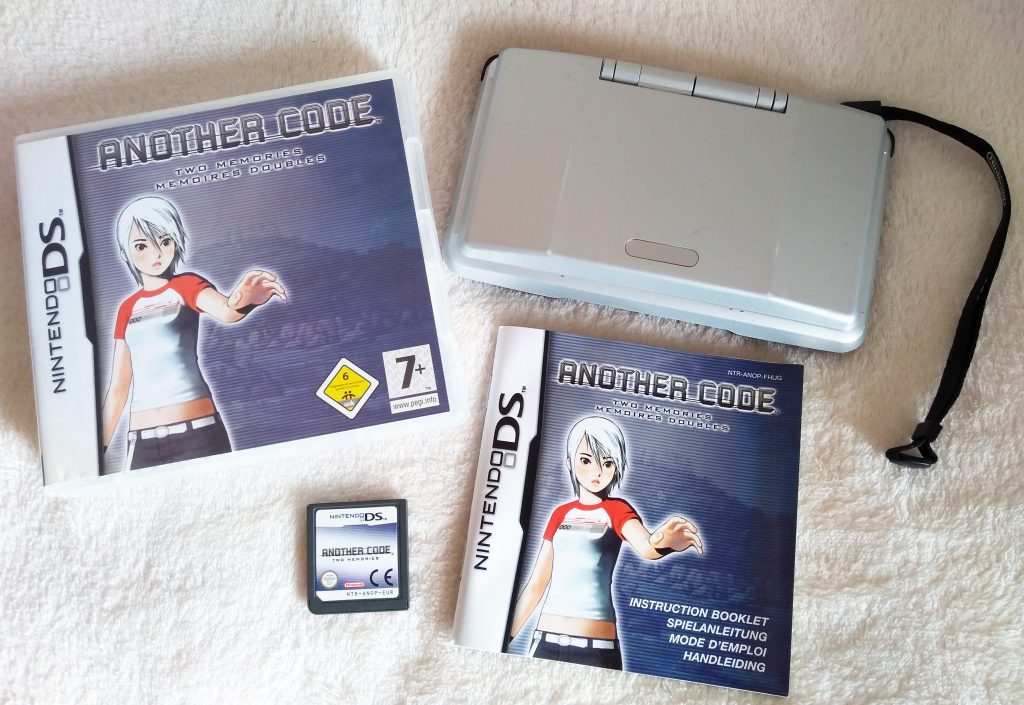
Platform: Nintendo DS
Release Date:
JPN: February 24, 2005
EU: June 24, 2005
AU: July 6, 2005
NA: September 27, 2005
Publisher: Nintendo
Developer: Cing
Genre: Point-and-Click Puzzle Adventure
Saves: 2 save slots
This game always intrigued me. I like point-and-click games, an interesting story, puzzles and anime style, so this game was one I always wanted to play. When my boyfriend moved in with me and we joined our game collection, I had to try this one out.
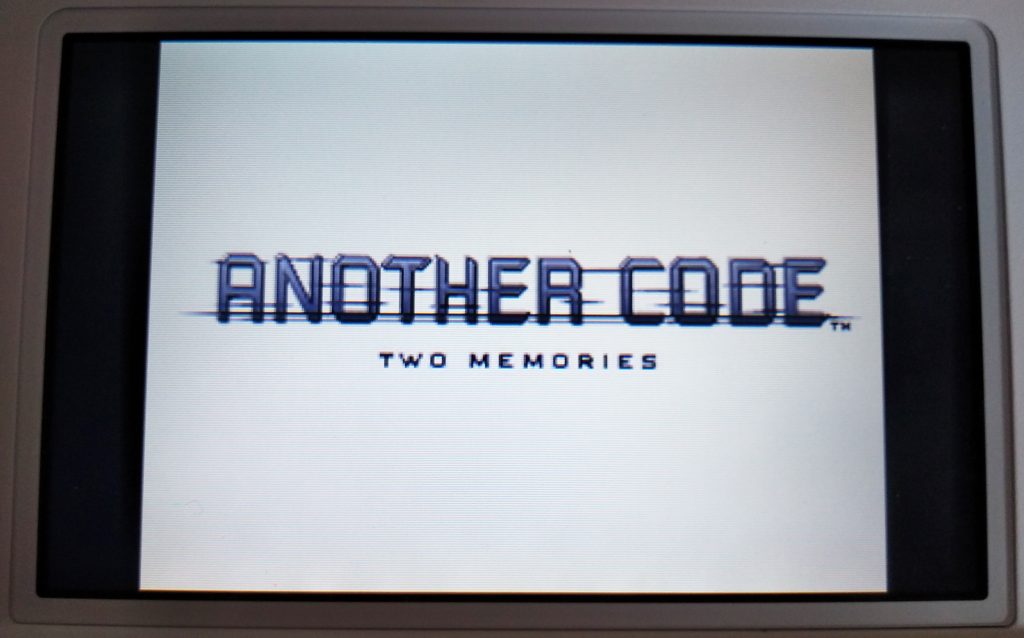
Gameplay
Another Code: Two Memories (or Trace Memory in America) is a point-and-click adventure puzzle game. You play as Ashley Mizuki Robbins, daughter of Richard and Sayoko Robbins, researchers of human memory. When Ashley turned 3, they went missing, presumed dead and she has lived with her aunt Jessica Robbins since. She has a vague memory of her third birthday, whereby she witnessed her mother getting shot as she hides in a closet. 11 years later, 2 days before her 14th birthday, she receives a package from her father. It contains a birthday card and a device called the DAS; Dual Another System (DTS, Dual Trace System in America). The DAS is programmed to only respond to Ashley’s biometrics, and contains a message from her father to meet him at Blood Edward Island.
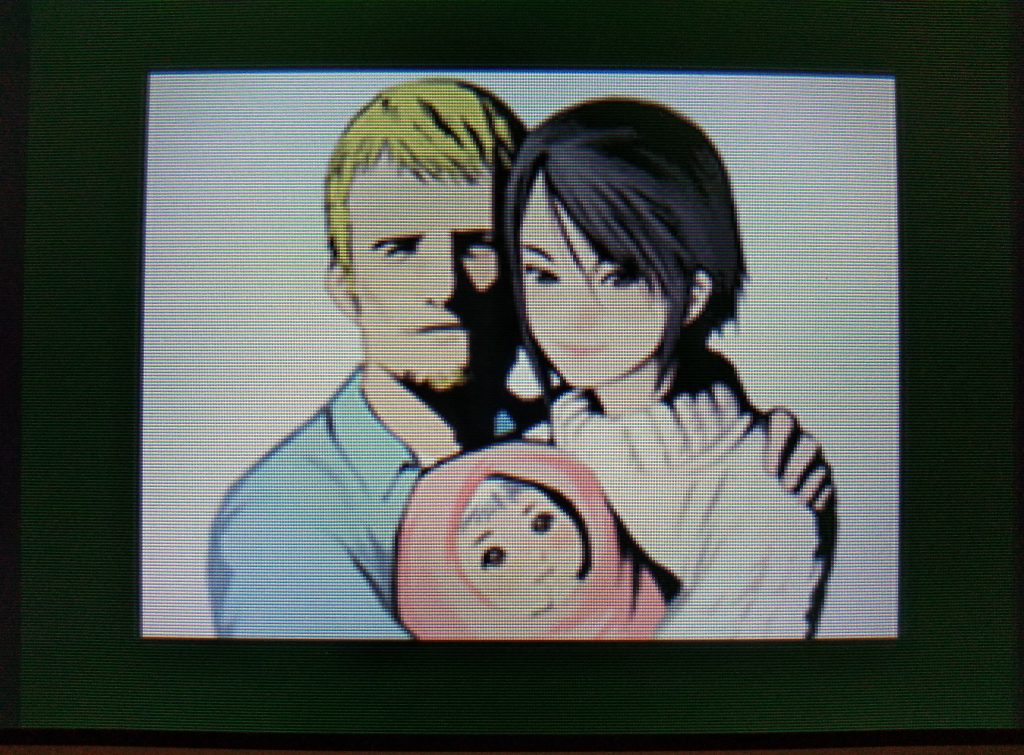
The game starts as you arrive with Jessica on the island. Your father is not there to greet you, so Jessica goes out looking for him. Left alone, you start to explore the island, solve puzzles and attempt to find your father and found out what happened 11 years ago. Along the way you meet a ghost D, who has lost his memories and is trying to figure out how he died, and together you try to recover both your memories.
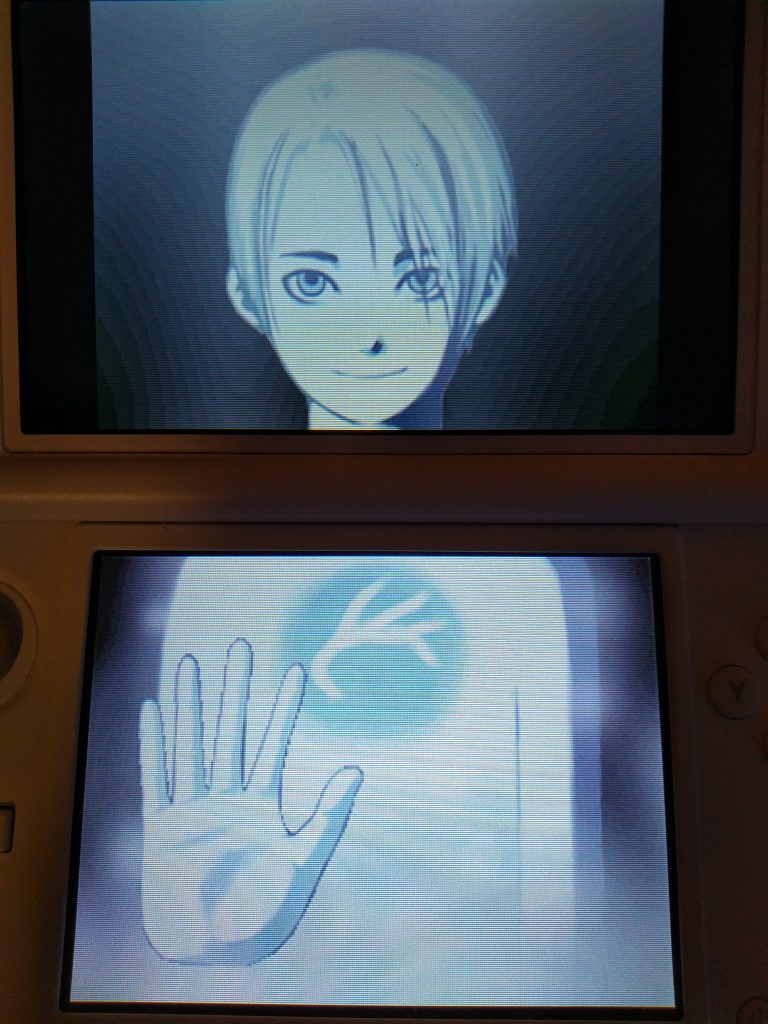
The player moves through 3D environments, using the touch screen, on the bottom DS screen. The top screen shows 2D images of the current location, what is currently being looked at, or cutscenes.
The DAS in the game is used to save, take pictures or load DAS data cards that the player can find in the world.
The puzzles use clever implementations of the DS’ capabilities, and will re-evaluate the way you approach in-game puzzles. For example, to get rid of dust on an item, players will have to blow in the microphone of the DS.

The DAS, or Dual Another System, is modelled after a Nintendo DS. The DAS data cards look like Nintendo DS game cartridges.
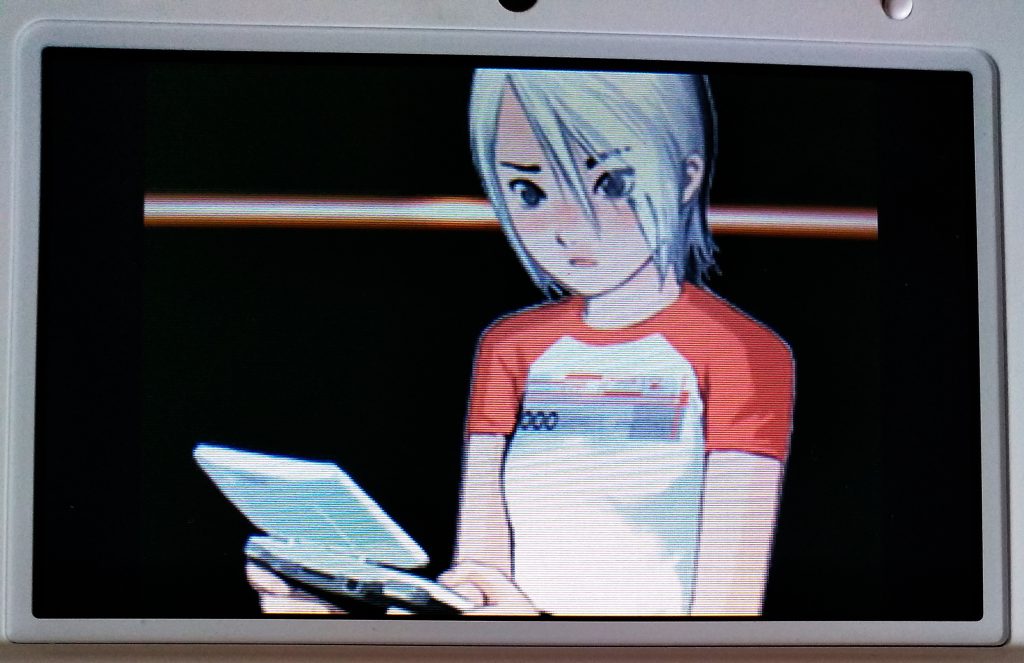
After the player has finished the story, they can play a New Game+. If they finish that, they will unlock a new post credit scene, that will hint at / foreshadow the sequel, Another Code: R – A journey into Lost Memories for the Wii.
Development
Another code started development in February 2004, a year before its release.
It was originally displayed as a quarter view, but was later changed to a top-down perspective due to difficulty controlling the game with a stylus, and to make it more user-friendly to people not used to 3D games. The game’s protagonist, Ashley Robbins, was designed by Game Director and Character Designer Taisuke Kanasaki to appeal to both male and female players. She was originally intended to be 17 years old, but this was later changed to 14 by Game Designer and Scenario Writer Rika Suzuki.
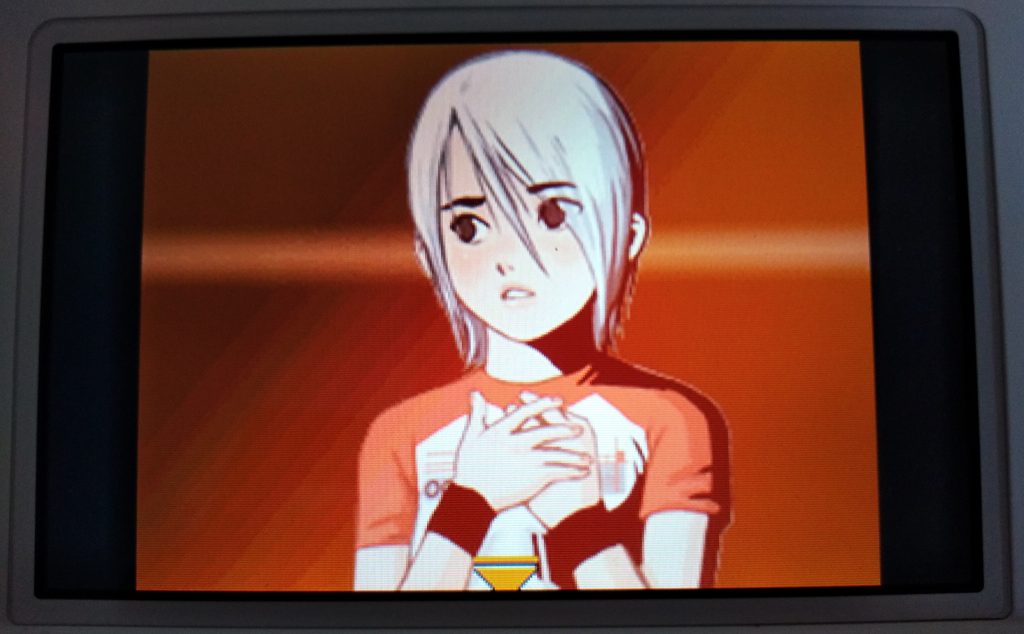
Taisuke Kanasaki, said that the development team always considers the relation a puzzle has to a game’s story.
“Even if we could invent an amazing idea for a puzzle, it might not be adopted without a solid relationship with the story.” – Taisuke Kanasaki
Rika Suzuki, said that she “prefers stories that are emotionally moving”.
“One thing that is reflected in my work is the idea of memories as a device for moving the story along. One of the things I try to acknowledge is the difference between a recollection and a memory.” – Rika Suzuki
The game takes place within a day, and Rika Suzuki said that is was a very special day. Something she finds interesting to portray in a story is, “when you wake up in the morning, you could have an extraordinary day which will be memorable for the rest of your life”.
Rika Suzuki’s father had Alzheimer’s disease. When he was young, he lived in Shanghai. She said that because of the disease he became able to draw very detailed maps of the area, which he couldn’t before. “That stimulated me to think a lot more about memory.”
Rika Suzuki thought the burden on the programmers was quite large. Kazuhiko Hagihara, the Lead Programmer, reportedly had disagreements with Taisuke Kanasaki during the latter half of development.
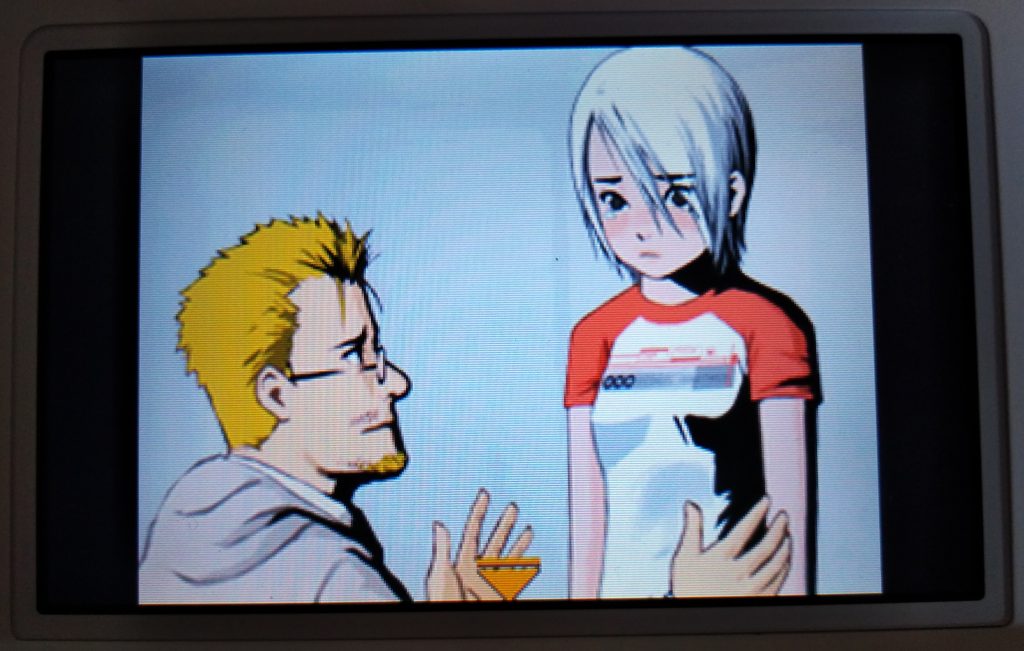
Rika Suzuki later said the game had a large impact in Japan, and that, “one thing that I am particularly proud of is that if you go into a games shop in Japan now there is an adventure corner, and that’s something that we feel we’ve contributed to coming back”. She said that, “[The company feels] that with our games you don’t need the special skills required to play other games. There is no gender or age classification, it’s just you and the story”.
Localisation
The original English (European) translation is a literal translation from the Japanese text. It was translated British, for example ‘candy’ is called ‘sweets’, and has lots of British terminology, despite Ashley supposedly being an American teenager. It also spells her surname differently, ‘Robins’ instead of ‘Robbins’.
Ann Lin of Nintendo of America’s Product Development Department stated that there are several differences between Another Code’s original Japanese text and the North American translation. She commented, “I think that a believable character, a believable person would have certain feelings of betrayal, not just acceptance. I wanted to explore that just a little. I think the [Japanese text] was a little more accepting, not really questioning the weirdness of meeting a ghost or any of the [strange] circumstances that had befallen her.”
The US version rewrote a large bulk of the text, somewhat changing the attitude of Ashley (she’s a little more sceptical, a little more opinionated, and in short, a bit more of a teenager in the American translation) and added Easter eggs that were not in the other versions.
In Japan and Europe the game’s title is Another Code: Two Memories, but in America it is called Trace Memory (assuming due to trademark issues). This means references to ‘trace’ are in the US game that is not occurring in the Japanese and European versions. One such change is the name of the in-game Nintendo DS, which in Japan and Europe is called the DAS (Dual Another System) and in America the DTS (Dual Trace System). The UI of the DAS has changed to remove references to ‘Another’ and instead shows ‘Trace’. The inscription on the front of the DAS/DTS was also changed.
Packaging
I only have the European version of Another Code: Two Memories.
The back of the box is written from a first person perspective of Ashley, telling the start of this adventure. It follows with a line to solve riddles using the touch screen and microphone.
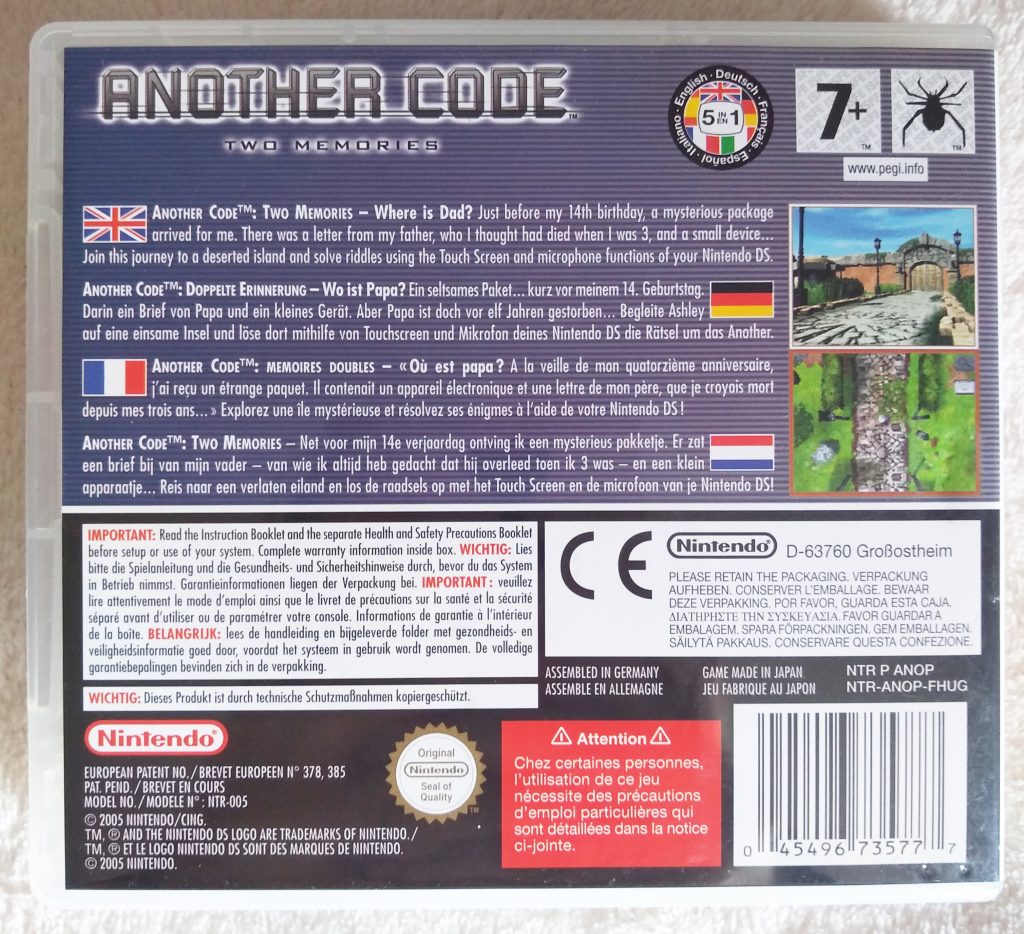
The game is European, but the packaging was made for a very specific part of Europe. The box’s spine as well as the manual’s corner is aqua, with the code NTR-ANOP-FHUG. The game cartridge has NTR-ANOP-EUR. So this is the box and manual distributed in France, the Netherlands (Holland), UK and Germany (FHUG), and the game itself is distributed in Europe (EUR).
The manual itself is quite thick, but this is due to all the languages inside it. It mainly shows and walks through the first part of the game, with a small written prologue and a few character descriptions.
This game did not come with anything else (but this may be because my boyfriend doesn’t always keep everything, or may have bought it secondhand, he doesn’t remember.) However, it came out shortly after the DS, and could be considered a ‘launch title’, and they may not have had such advertisements inside yet.
Accessibility
- Visual
Due to the point-and-click nature, the game is very visual, and you have to look in the environment to find clues. Some puzzles require you to look at images, or line up photos or items. This could be an issue for the visually impaired.
The text is a small size, can take up to two or three lines and covers about a fourth of the screen. It is in an easy to read font in black, blue or red, on a very light white or blue gradient background, or white on a dark green background. Text moves on upon a button press, so can be read at leisure.
During the cutscenes text can be white on the screen.
The game comes in five languages on the EUR version; English, German, French, Spanish and Italian.

- Fine-Motor
The game has a slow pace and nothing requires a fast reflex. However, some puzzles require touch screen, microphone or other DS capabilities that require the player to have some mobility. - Auditory
The game is text-heavy and does not have any voice acting. There are no sound puzzles that require you to listen to certain sounds.
You can not hear when you walk against a wall. - Cognitive
You have to remember story beats / character names, which you get quizzed on at the end of a chapter (multiple choice of 3). You can easily brute force your way through though as when you get it wrong you can simply retry.
Power Up
The game always looked like something I would enjoy, but at the time I did not own a Nintendo DS. When I later did, I had forgotten about the game. My Nintendo DS also broke on the hinge, so I didn’t really play DS games until I bought a 3DS XL years later.
After me and my boyfriend moved in together, and we joined our game collections, I re-found this game. Using his old Nintendo DS, who had the same look as the in-game DAS!, I played the game during lunch time at work in 15~20 minute sessions.
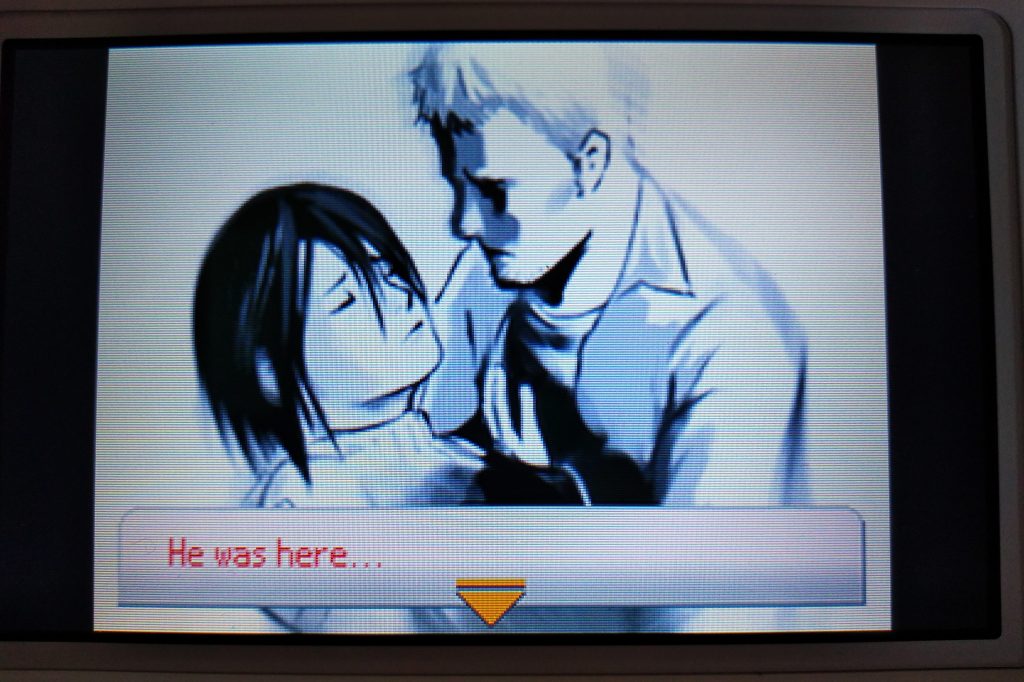
The 2D art looks beautiful. Although the Character Portraits are basic and get repetitive, the cutscene images are gorgeous. I especially love the ‘memory’ sequences. They are purposely painted vague and somewhat blurry, like a memory you can’t fully remember. Not a big fan of the 3D environment though. Considering the game changed perspective, and the puzzles are 2D, this could have been rendered in a similar beautiful style, but I figure this was probably too late in development with the 3D work already done.
The story is full of mystery (and a bit bizarre with a ghost). In my opinion, the ghost and the islands’ history didn’t add much to the story. I was more interested in Ashley and her family than D’s. However, I can see how D is there to guide Ashley. When you get near the end it’s fairly obvious what is going on, but the lead up to it kept you guessing, and even in the end the story tries to throw you for a loop.
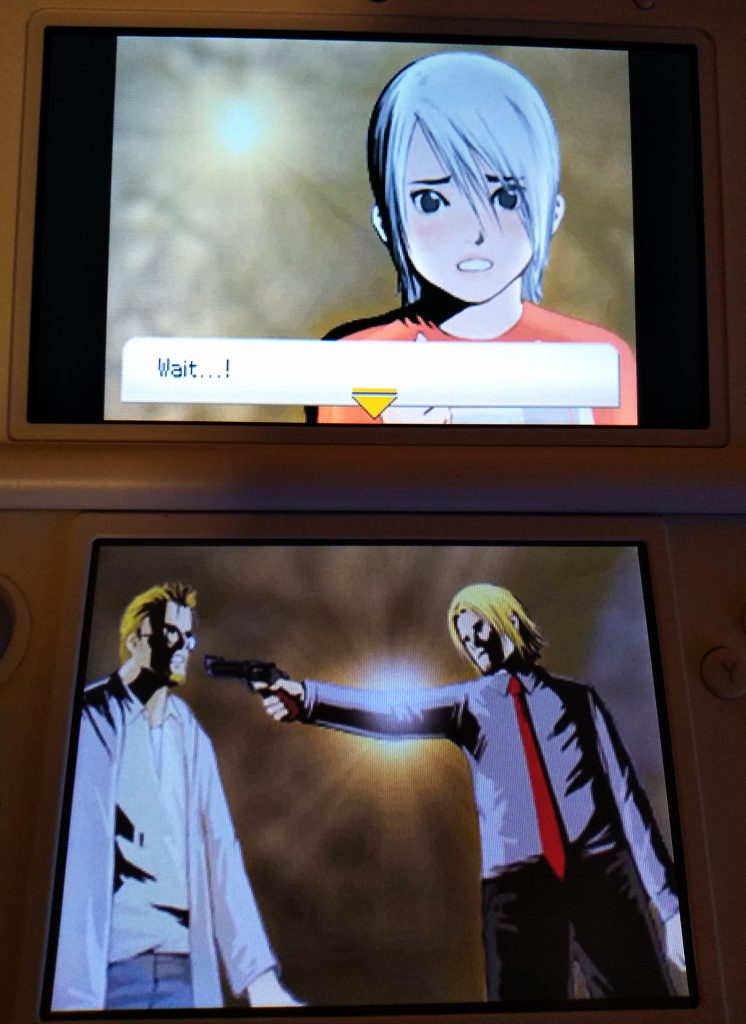
The biggest strength of this game is though, as expected, the puzzles. Some of these blew me away! They were never hard, they were very logical, but made you reconsider how to use your Nintendo DS. In context, it seems obvious that early DS titles would utilise all the Nintendo DS’ capabilities. But now it seemed refreshing. I don’t want to spoil it, but the stamp puzzle was my favourite. I spend a good time thinking how to get the stamp on paper, and when it hit me it just blew my mind. I wasn’t even aware that a DS title could do that.
As I played on a DS similar to the DAS, I also felt really connected with the game. Combined with the puzzles, I felt a barrier was lifted between the real world and the game’s.

The downside of this game is, is that there is no real replay value. You can collect secret DAS cards that contain more story context and background information, and I guess if you missed some you could run through the game again collecting these. You’d also unlock the extra ending hinting at the sequel. But you already know all the answers to the puzzles and the way through the island, so the game itself will be quite boring.
Another thing of annoyance I found is you could only collect objects once they have been found useful. For example, I would find an object but I could not take it with me. Later I find a puzzle that would require that object, and I have to backtrack to pick it up. I don’t mind backtracking as much if I had missed something, but I do mind if I intended to take the object with me in the first run. Sometimes you also can not leave an area unless everything in it has been found. It kinda spoils the game as it is telling you there is more here.
But this didn’t deter me from enjoying the game. It’s a good little puzzle adventure game, nothing too hard. I finished the game in just under 5 hours. However, due to the nature of the game, I don’t think I’ll be replaying it any time soon. Maybe in several years when I have forgotten all the answers…
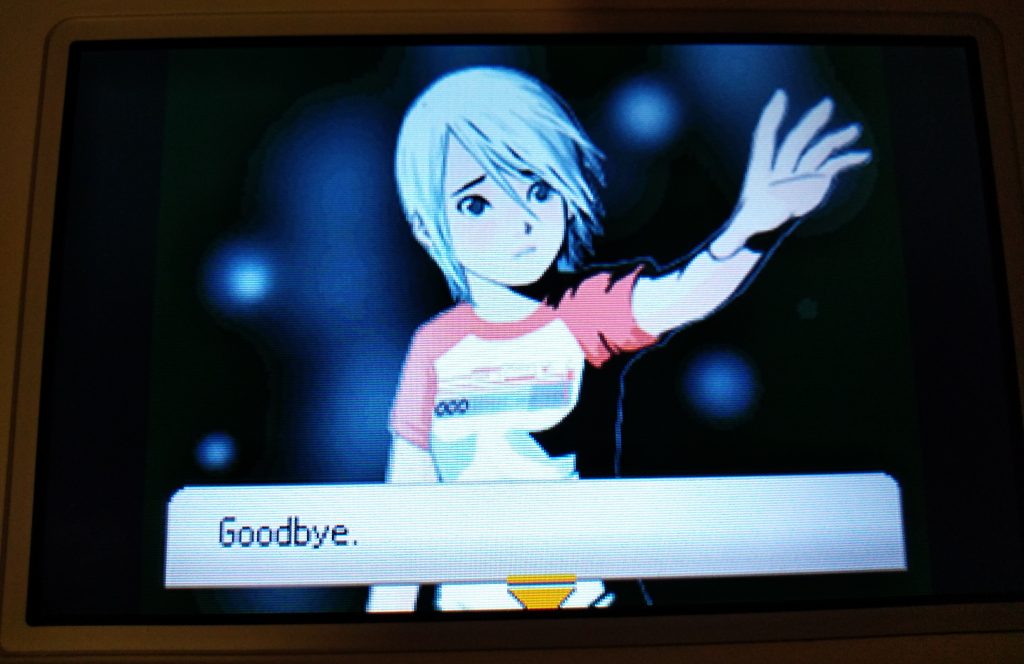
Recommendation
If you like puzzle or point-and-click adventure games, you will enjoy Another Code: Two Memories. The puzzles aren’t hard but refreshing and will make you rethink how to approach them. The game’s 2D art also looks beautiful.
However, the game might be too easy so if you like hard puzzles you may want to give it a miss.
And if puzzle and point-and-click adventure games aren’t your cup of tea, you probably won’t like this one either.

Did you play this game? What are your memories (no pun intended!) of it? Are you thinking of playing this? Is there any information you’re missing? Let me know in the comments below!